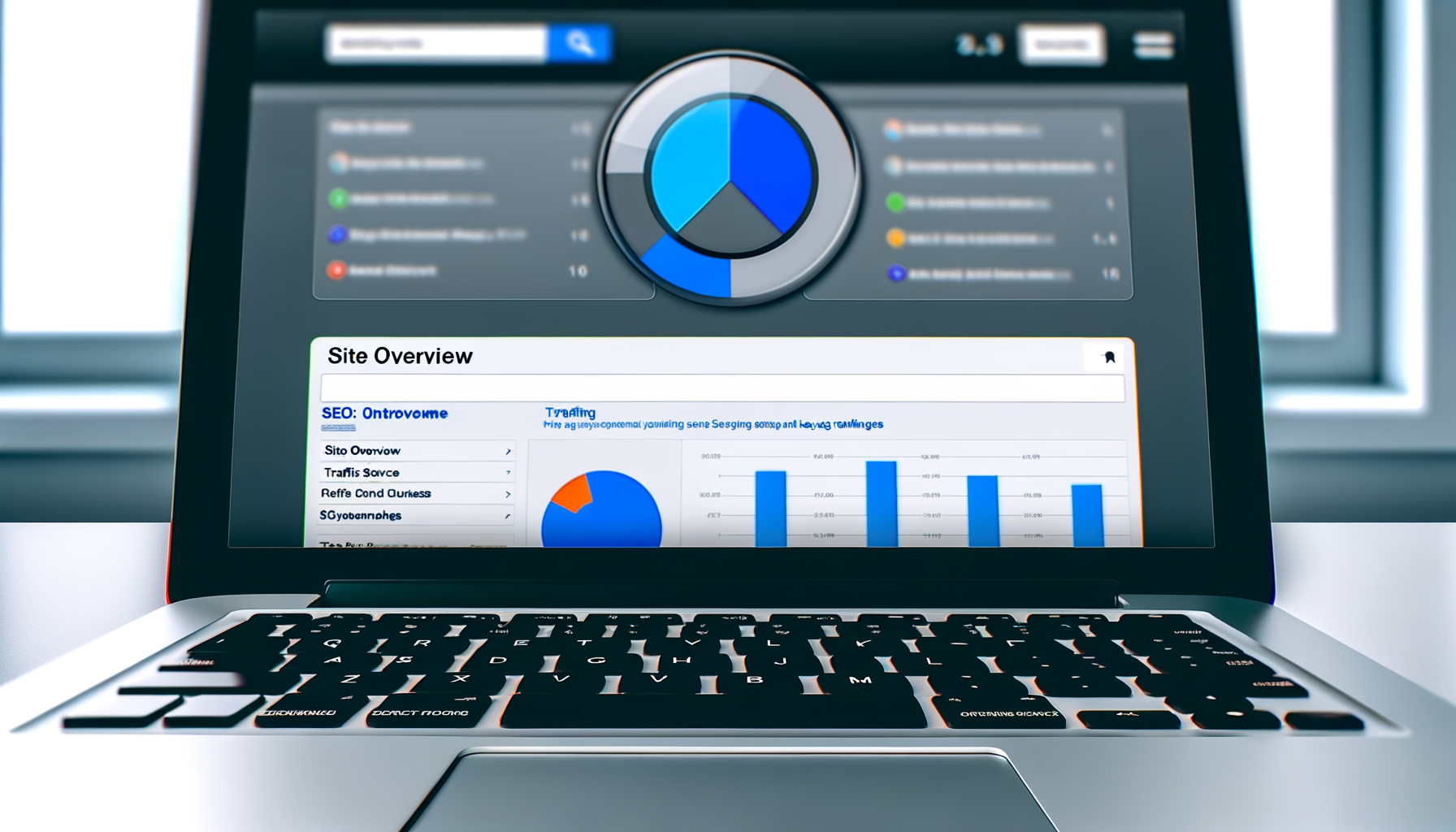
Google Analytics 4 (GA4) is the latest iteration of Google’s popular web analytics service, and it’s designed to offer a more comprehensive view of how users interact with websites and apps. For SEO professionals and marketers, understanding and leveraging GA4 is crucial for optimizing search strategies, gaining insights into user behavior, and improving the overall performance and visibility of their websites.
Understanding Google Analytics 4 for SEO
SEO is fundamentally about understanding your audience and how they discover and engage with your content. GA4 offers a wealth of data that can help you refine your SEO strategies to better align with user behavior and preferences. It focuses on event-based data, giving you a more nuanced view of how users interact with your site. This change marks a departure from the session-based tracking found in Universal Analytics (the previous version), positioning GA4 as a tool that better reflects the complex ways in which people browse the web today.
Setting Up GA4 for SEO Success
Before diving into the features of GA4, make sure it is properly set up to track your website:
1. Create a GA4 property in your Google Analytics account.
2. Install the GA4 tracking code onto your website or use Google Tag Manager for simplified management.
3. Configure your data streams to collect information from your website, apps, or both.
4. Define relevant events and parameters that you want to track, such as pageviews, clicks, or file downloads.
5. Ensure that Goals are properly transitioned from Universal Analytics to their equivalent in GA4, now known as ‘Conversions’.
Once your GA4 is set up, it’s time to explore how to leverage its features for optimizing your SEO strategies.
Utilizing GA4 Features for SEO Insights
GA4 provides a host of new features that are beneficial for SEO analysis. Understanding and using these effectively can give you an edge in optimizing your website for search engines.
Using the GA4 Interface
The GA4 interface may initially seem daunting due to its departure from the Universal Analytics layout many are accustomed to. Spend time navigating through the different reports, and familiarize yourself with the new “Analysis Hub” which provides customized reporting capabilities.
Event Tracking and SEO
Unlike Universal Analytics, GA4 does not differentiate between pageviews and events, treating every interaction as an “event.” This allows for more detailed tracking of user interactions which is vital for SEO. For example, you can track how frequently users click an internal link that points to a certain section of your website, providing insights into which areas of your site are attracting the most interest.
Engagement Metrics and SEO
Engagement metrics in GA4 offer a fresh perspective on user interaction. Traditional metrics like bounce rate have been replaced by engagement rate, engaged sessions, and engagement time. These metrics give a more nuanced view of user behavior which is important for understanding the effectiveness of your content and optimizing your pages for better user experience.
Understanding User Acquisition
GA4’s user acquisition reports are imperative for SEO as they show how users arrived at your site. You can see which channels are driving the most traffic, helping to determine the effectiveness of your SEO efforts. Refining your strategies based on this data can lead to improved search engine performance.
Audience Demographics and Interests
Tailoring your content to your audience is a cardinal rule of SEO, and GA4’s demographics and interests reports can tell you a lot about the people who visit your site. This information enables you to create content that resonates with your audience, potentially increasing your site’s relevance and authority in the eyes of search engines.
Site Speed and User Experience
Site speed is a known SEO factor, and GA4 provides reports on various user experience metrics like loading time, interactivity, and layout shifts. Improving these aspects of your site can contribute to better organic rankings and a more favorable user experience.
Integration with Google Search Console
Integrating GA4 with Google Search Console allows you to pull in valuable SEO data like search queries, landing page performance, and click-through rates directly into your GA4 dashboard. This amalgamation of data offers a more complete picture of how your SEO strategies are performing.
Advanced Analysis in Google Analytics 4 for SEO
GA4’s Analysis Hub offers advanced analysis tools that can unlock deeper SEO insights.
Funnel Analysis
Understanding the user journey is critical for SEO. Use GA4’s funnel analysis to visualize the steps users take through your website and identify where they’re dropping off. This can help refine the user journey on your site, potentially improving your conversion rates and organic rankings.
Path Analysis
With path analysis, you can map the common paths users take across your site. This can highlight popular content or unexpected user flows, providing opportunities to guide users through your desired conversion paths more effectively.
User Segments and Comparison
Creating segments allows you to compare how different groups of users interact with your site based on various criteria such as demographics or behavior. Using the comparison feature can highlight how well your content is performing across different segments, informing content strategy and potential areas for SEO improvement.
Using Predictive Metrics
GA4 introduces predictive metrics like purchase probability and churn probability, which use machine learning to forecast user behavior. While more relevant for e-commerce SEO, these metrics can also inform content strategies by predicting the likelihood of users engaging with your content based on past behaviors.
Finishing Thoughts
Google Analytics 4 is a powerful tool that has significantly improved the ability to track and analyze user behavior. For SEO experts, it offers a wealth of information that, when used effectively, can lead to profound insights and informed decision-making to boost organic search performance. Understanding the intricacies of GA4, from event tracking to predictive analytics, can seem overwhelming at first, but as you become well-versed in these functionalities, you’ll uncover opportunities to optimize your SEO strategies in ways that were not possible with previous versions of Google Analytics. Embrace GA4’s insights to stay ahead in the dynamic landscape of search engine optimization. Remember that as Google’s machine learning and AI capabilities continue to develop, GA4 will likely become an even more indispensable asset for SEO professionals aiming to drive better results through data-driven strategies.
Frequently Asked Questions
What is Google Analytics 4 (GA4) and how is it different from Universal Analytics (UA)?
Google Analytics 4 (GA4) is the latest version of Google Analytics that offers a more integrated approach to data collection and analysis compared to its predecessor, Universal Analytics (UA). GA4 is designed to provide deeper insights into user behavior by using event-driven data models rather than session-based models. This means it can track interactions across platforms and devices more effectively and apply machine learning to predict user behavior.
How do I set up a Google Analytics 4 property for my website?
To set up a GA4 property, first make sure you have a Google Account and then follow these steps:
- Go to the Google Analytics website and sign in.
- Click on ‘Admin’ and navigate to the ‘Account’ column.
- Select or create the account you want to use for your website.
- In the ‘Property’ column, click on ‘Create Property’ and follow the setup process, inputting your website details as prompted.
- Select the ‘GA4 Setup Assistant’ to create a new GA4 property. It will guide you through the process.
Once your GA4 property is created, you can install the tracking code on your website.
How do I install the GA4 tracking code on my website?
After setting up a GA4 property, you will receive a measurement ID that starts with ‘G-‘. To install the tracking code:
- Go to the GA4 Admin section and under your property, click on ‘Data Streams’.
- Find your web data stream and click on the corresponding stream URL.
- Under ‘Tagging Instructions’, choose ‘Global Site Tag (gtag.js)’ or ‘Google Tag Manager’ to get the tracking code snippet.
- Copy and paste the code into the head section of your website code before the closing tag.
- If you’re using a CMS like WordPress, you may use plugins that integrate GA4 tracking code effortlessly.
How can I use GA4 to track specific SEO-related metrics?
In GA4, SEO-related metrics can be tracked through a combination of automatically collected events, enhanced measurement features, and custom events. Some important metrics include organic traffic, search query data, and user engagement metrics like scroll depth and outbound clicks. To access these, you need to:
- Configure custom reports in the ‘Analysis’ section to include dimensions and metrics relevant to your SEO goals.
- Analyze user paths and navigation through ‘User Explorer’ and ‘Path Analysis’ features.
- Use the integration with Google Search Console to get search query data directly in GA4.
Remember to set up conversions to track specific goals like form submissions or ecommerce transactions, which can be tied back to your organic search efforts.
Can I create custom audiences in GA4 for SEO purposes?
Yes, one of the benefits of GA4 is the ability to create detailed custom audiences based on user behavior, which can then be used for retargeting or to better understand different segments of organic traffic. To create a custom audience for SEO, follow these steps:
- In GA4, click on ‘Audience Builder’ under the ‘Configure’ section.
- Choose to create a new audience and select the conditions based on the user behavior you’re interested in, such as users who visited a specific set of pages from organic search.
- Name your audience and save it. You can then use this audience to track SEO performance or as a remarketing list if integrated with Google Ads.
What reports in GA4 should I look at for SEO analysis?
For SEO analysis, focus on the following GA4 reports:
- ‘Acquisition’ reports to see how users are finding your website, with a focus on the ‘Traffic acquisition’ report.
- ‘Engagement’ reports to understand what users are doing on your site, such as ‘Events’ and ‘Conversions’ to see if they’re taking desired actions.
- ‘Retention’ reports to look at how well your site retains users and their level of engagement over time.
- ‘User’ reports to examine user demographics and interests, in case you want to align your content and SEO strategy with your users’ preferences.
Additionally, monitor real-time reports to see live user activity, which can help you spot immediate issues or understand the impact of recent changes.
How do I ensure data privacy and compliance with GA4?
GA4 includes several features that address data privacy and compliance with regulations like GDPR and CCPA. Ensure data privacy by:
- Configuring data settings to respect user data collection preferences, such as IP anonymization and data retention periods.
- Using the consent mode to adapt to the consent status of your users for analytics and advertising features.
- Not collecting personally identifiable information (PII) and educating users about your data collection practices through a transparent privacy policy.
Always stay updated with the latest compliance guidelines and data protection laws in the regions where your audience is located.






